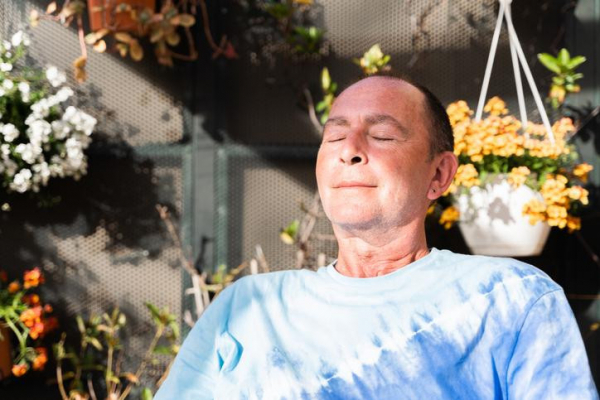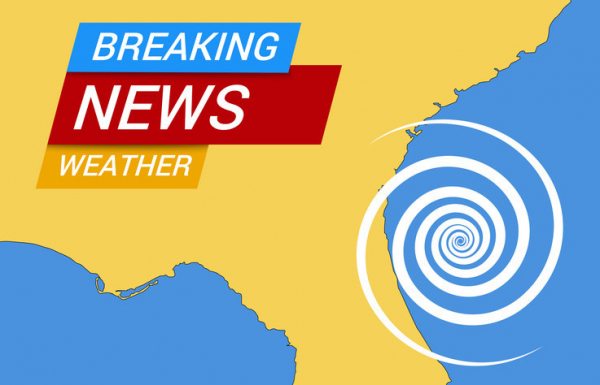
Want a calmer brain? Try this

For neuroscientist Sara Lazar, a form of meditation called open awareness is as fundamental to her day as breathing.
“I just become aware that I am aware, with no particular thing that I focus on,” explains Lazar, an associate researcher in the psychiatry department at Massachusetts General Hospital and assistant professor of psychology at Harvard Medical School. “This sort of practice helps me become more aware of the subtle thoughts and emotions that briefly flit by, that we usually ignore but are quite useful to tune into.”
But meditation doesn’t just change your perspective in the moment. Some studies show certain types of meditation offer an array of benefits, from easing chronic pain and stress and lowering high blood pressure to help relieve anxiety and depression. And, as Lazar’s research has shown, meditation can actually change the structure and connectivity of brain areas that help us cope with fear and anxiety.
“It’s become really clear that all of our experiences shape our brain in one way or another,” Lazar says. “A lot of people talk about meditation being a mental exercise. Just as you build your physical muscles, you can build your calm muscles. Meditation is a very effective way of training those muscles.”
What counts as meditation?
More than you might have believed. An intriguing if somewhat perplexing aspect of meditation is that it encompasses a broad range of practices. “It’s clear what is not meditation, but there’s less consensus on what it is,” Lazar says.
Open awareness, Lazar’s go-to meditation, joins other forms, including focused awareness, slow deep breathing, guided meditation, and mantra meditation, along with many variations. At their core, Lazar says, is an awareness of the moment, noticing what you’re experiencing and nonjudgmentally disengaging from intrusive thoughts that might interfere with your ability to attend to this task.
Meditation can also involve sitting with eyes closed and paying attention to your body and any sensations that are present. A regular meditation practice typically involves slowing down, breathing, and observing inner experience.
“Meditation can involve flickering candles, breath awareness, or mantras — all of these things,” Lazar says. “But there’s definitely an element of focusing and regulating your attention.”
A close look at how meditation alters the brain
Small MRI imaging studies have zeroed in meditation’s effects on the amygdala, an almond-shaped structure deep within the brain that processes fear and anxiety as well as other emotions.
Lazar and her colleagues have spent many years laying the groundwork to show how practicing mindfulness-based stress reduction (MBSR) alters the amygdala after only about two months. The MBSR practice in this research consisted of weekly group meetings and daily home mindfulness practices, including sitting meditation and yoga.
What has their research found?
One key study involved 26 people with high levels of perceived stress. After an eight-week regimen of MBSR, brain scans showed the density of their amygdalae decreased, and these brain changes correlated to lower reported stress levels.
Building on this, Lazar and colleagues designed a study that focused on 26 people diagnosed with generalized anxiety, a disorder marked by excessive, ongoing, and often illogical anxiety levels. The researchers randomized participants to either practice MBSR or receive stress management education. These participants were compared to 26 healthy participants.
In this first-of-its-kind research, participants were shown a series of images with angry or neutral facial expressions while their brain activity was gauged using functional MRI imaging. At the beginning of the study, anxiety patients showed higher levels of amygdala activation in response to neutral faces than healthy participants. This suggests a stronger fear response to a nonthreatening situation.
But after eight weeks of MBSR, MRI imaging showed increased connections between the amygdala and the prefrontal cortex, a brain area crucial to emotional regulation. The amygdalae in participants with generalized anxiety no longer displayed a fear response to neutral faces. These participants also reported their symptoms had improved.
“It seems meditation helps to down-regulate the amygdala in response to things it perceives to be threatening,” Lazar says.
How can meditation benefits help us in daily life?
Lazar believes training your brain to stop and notice your thoughts in a slightly detached way can calm you amidst the muddle of work deadlines, family friction, or distressing news.
“That’s one of the biggest translations” of meditation to everyday benefits, she says. “The person or situation that is stressing you out won’t go away, but you can watch your reactivity to the situation in a mindful, detached way, which shifts your relationship to it.”
“It’s not indifference,” she adds. “It’s sort of like a bubble bursting — you realize you don’t need to keep going on this loop. Once you see that, it totally shifts your relationship to that reaction bubbling through your brain.”
Want to try meditation — or expand your practice?
Haven’t tried meditating? To get started, Lazar recommends the Three-Minute Breathing Space Meditation. This offers a quick taste of meditation, walking you through three pared-down but distinct steps. “It’s simple, fast, and anyone can do it,” she says.
Simple ways to expand this basic approach are:
- adding minutes, just as you might for exercise
- meditating outdoors
- pausing to notice how you feel after you meditate.
“Or try either doing a longer session or short hits throughout the day, such as a three-minute breathing break four to five times a day,” Lazar suggests.
Another way to enhance your practice is to use ordinary, repetitive moments throughout the day — such as reaching for a doorknob — as a cue to pause for five seconds and notice the sensation of your hand on the knob.
“As you walk from your office to your car, for instance, instead of thinking of all the things you have to do, you can be mindful while you’re walking,” Lazar says. “Feel the sunshine and the pavement under your feet. There are simple ways to work meditation into each day.”
About the Author

Maureen Salamon, Executive Editor, Harvard Women's Health Watch
Maureen Salamon is executive editor of Harvard Women’s Health Watch. She began her career as a newspaper reporter and later covered health and medicine for a wide variety of websites, magazines, and hospitals. Her work has … See Full Bio View all posts by Maureen Salamon
About the Reviewer

Howard E. LeWine, MD, Chief Medical Editor, Harvard Health Publishing; Editorial Advisory Board Member, Harvard Health Publishing
Dr. Howard LeWine is a practicing internist at Brigham and Women’s Hospital in Boston, Chief Medical Editor at Harvard Health Publishing, and editor in chief of Harvard Men’s Health Watch. See Full Bio View all posts by Howard E. LeWine, MD

Packing your hurricane go bag? Make provisions for your health

When you live in a coastal area, preparing early for potential hurricanes is a must. Storms can develop quickly, leaving little time to figure out where you’ll be safe or which items to pack if you have to evacuate. And health care necessities, such as medications or medical equipment, are often overlooked in the scramble.
“People might bring their diabetes medication but forget their blood sugar monitor, or bring their hearing aids but forget extra batteries for them,” says Dr. Scott Goldberg, medical director of emergency preparedness at Brigham and Women’s Hospital and a longtime member of a FEMA task force that responds to hurricane-damaged areas.
Here’s some insight on what to expect this hurricane season, and how to prioritize health care in your hurricane kit.
What will the 2024 hurricane season look like?
This year’s hurricane predictions underscore the urgency to start preparations now.
Forecasters with the National Oceanic and Atmospheric Administration's National Weather Service expect above-normal activity for the 2024 hurricane season (which lasts until November 30).
Meteorologists anticipate 17 to 25 storms with winds of 39 mph or higher, including eight to 13 hurricanes — four to seven of which could be major hurricanes with 111 mph winds or higher.
What kinds of plans should you make?
Preparing for the possibility of big storms is a major undertaking. Long before ferocious winds and torrential rains arrive, you must gather hurricane supplies, figure out how to secure your home, and determine where to go if you need to evacuate (especially if you live in a flood zone). Contact the emergency management department at your city or county for shelter information.
If you’ll need help evacuating due to a medical condition, or if you’ll need medical assistance at a shelter, find out if your county or city has a special needs registry like this one in Florida. Signing up will enable first responders to notify you about storms and transport you to a special shelter that has medical staff, hospital cots, and possibly oxygen tanks.
What should you pack?
While a shelter provides a safe place to ride out a storm, including bathrooms, water, and basic meals, it’s up to you to bring everything else. It’s essential to pack medical equipment and sufficient medications and health supplies.
“It’s natural to just grab the prescription medications in your medicine cabinet, but what if it’s only a two-day supply? It might be a while before you can get a refill. We recommend at least a 14-day or 30-day supply of every prescription,” Dr. Goldberg says. “Talk to your doctor about the possibility of getting an extra refill to keep on standby for your go bag.”
Other health-related items you’ll want to pack include:
- medical supplies you use regularly, such as a blood pressure monitor, heart monitor, CPAP machine, wheelchair, or walker
- over-the-counter medicines you use regularly, such as heartburn medicine or pain relievers
- foods for specific dietary needs, such as gluten-free food if you have celiac disease (if you have infants or children, you’ll need to bring foods they can eat)
- healthy, nonperishable snacks such as nuts, nut butters, trail mix, dried fruit, granola bars, protein bars, and whole-grain bread, crackers, or cereals
- hygiene products such as soap, hand sanitizer, toothbrushes and toothpaste, shampoo, deodorant, infant or adult diapers, lip balm, moist towelettes, and toilet paper — because shelters often run out of it.
Remember the basics
In some ways, you can think of shelter living like camping. You’ll need lots of basic supplies to get through it, including:
- a sleeping bag or blanket and pillow for each person in your family
- clean towels and washcloths
- a few extra changes of clothes per person
- a first-aid kit
- flashlights and extra batteries
- chargers for your electronic gadgets
- rechargeable battery packs.
Bring important paperwork
In addition to supplies, bring important documents such as:
- a list of your medications, vitamins, and supplements (include the name, dose, and frequency of each one)
- a list of the names, addresses, and phone numbers of your primary care provider and any specialists who treat you
- a list of your emergency contacts and their phone numbers
- your pharmacy’s phone number and address
- copies of your birth certificate and driver’s license
- copies of home, car, or life insurance policies
- copies of your health insurance cards
- a copy of your advance directive — which includes your living will and health care proxy form.
“Store these documents on a flash drive. Also make photocopies of them, which are easiest for doctors to consult in an emergency setting. Place them in a plastic zip-top bag to keep them dry,” Dr. Goldberg advises.
Prepare right now
Start today. Gather as many go-bag supplies as you can, including the bags. A small suitcase, backpack, or duffel bag for each person in your family will work well.
And try not to put off these important preparations. “Hurricanes are major stressors. You might be worried, sleep deprived, fatigued, and emotional,” Dr. Goldberg says. “All of that will make it hard to think clearly. You’ll do yourself and your family a favor by having discussions now and getting started on your hurricane plan.”
About the Author

Heidi Godman, Executive Editor, Harvard Health Letter
Heidi Godman is the executive editor of the Harvard Health Letter. Before coming to the Health Letter, she was an award-winning television news anchor and medical reporter for 25 years. Heidi was named a journalism fellow … See Full Bio View all posts by Heidi Godman
About the Reviewer

Howard E. LeWine, MD, Chief Medical Editor, Harvard Health Publishing; Editorial Advisory Board Member, Harvard Health Publishing
Dr. Howard LeWine is a practicing internist at Brigham and Women’s Hospital in Boston, Chief Medical Editor at Harvard Health Publishing, and editor in chief of Harvard Men’s Health Watch. See Full Bio View all posts by Howard E. LeWine, MD